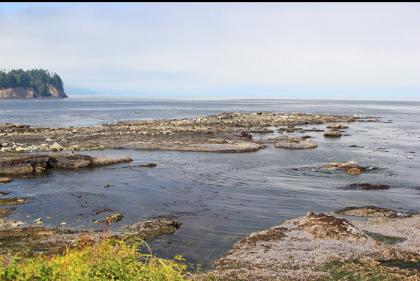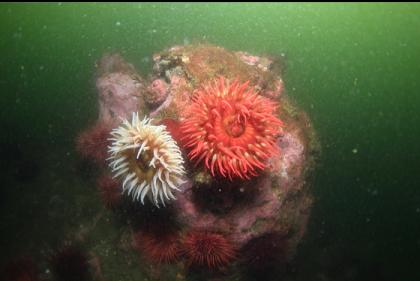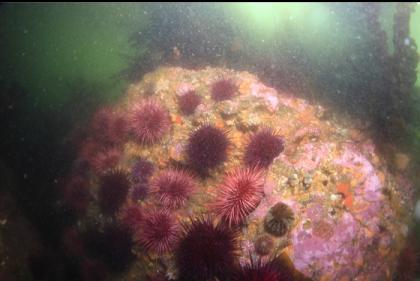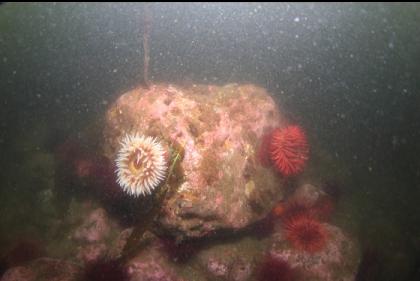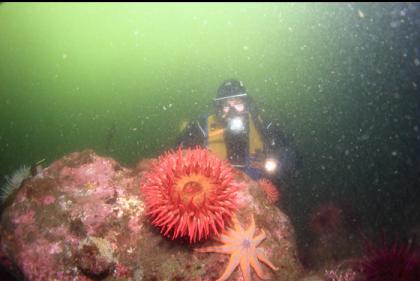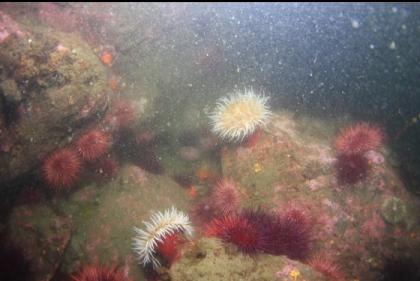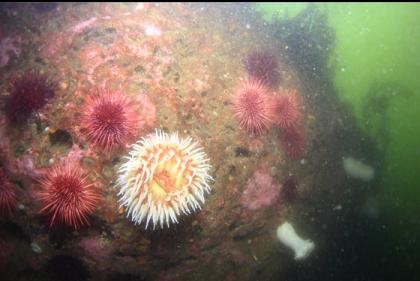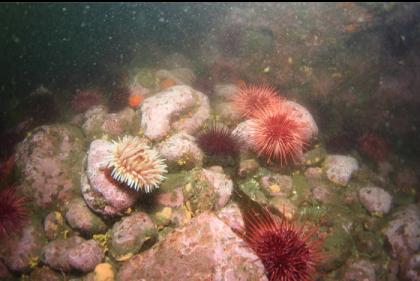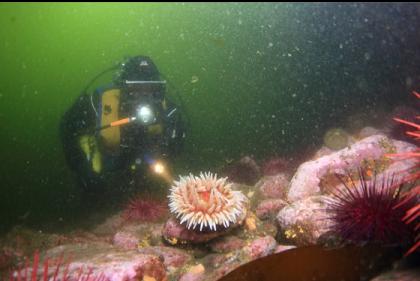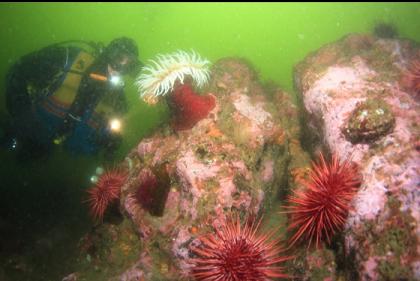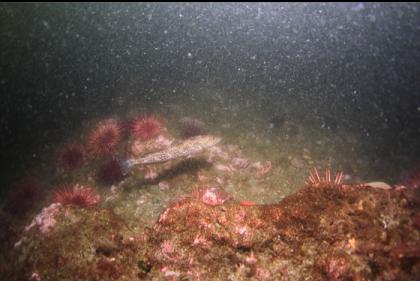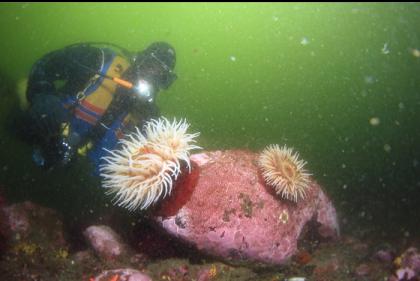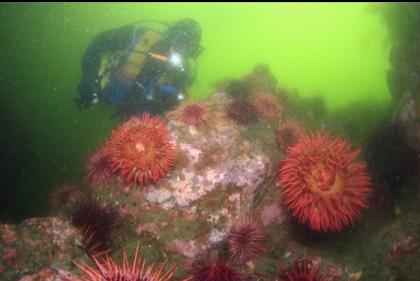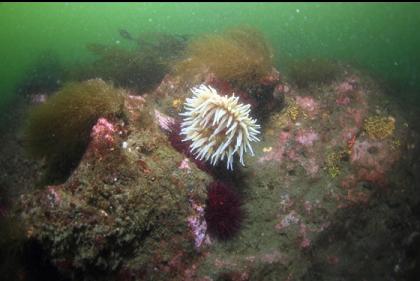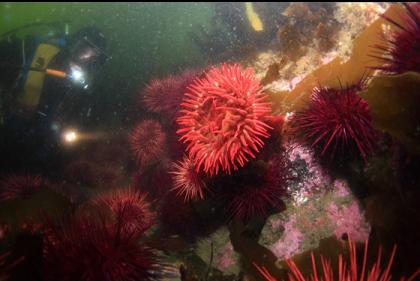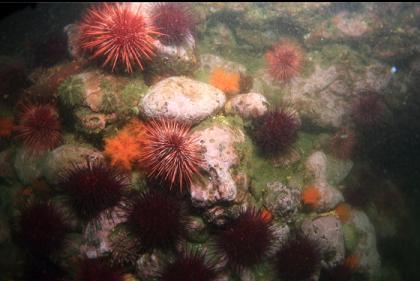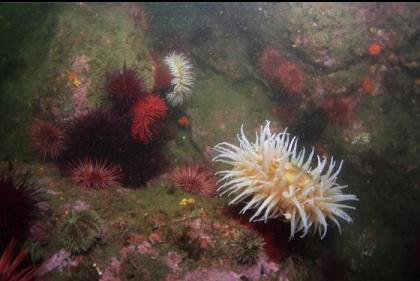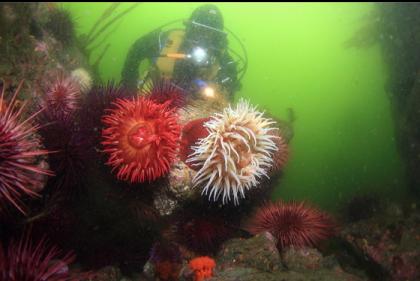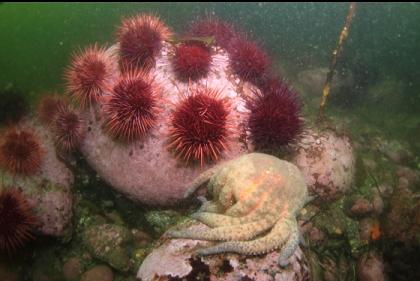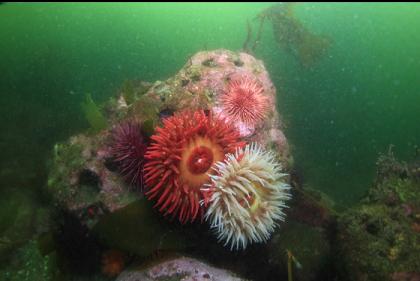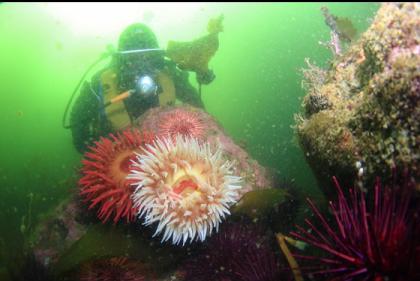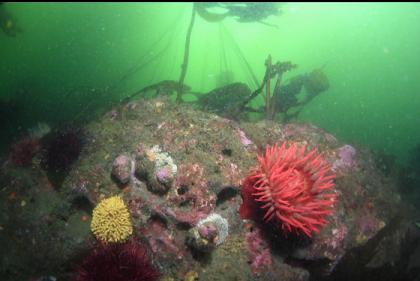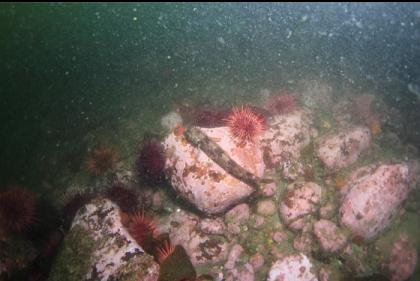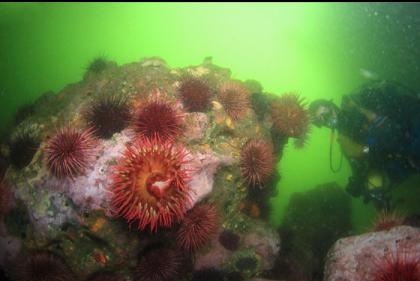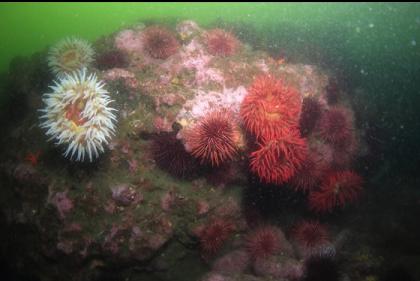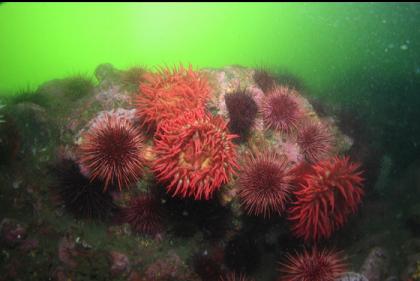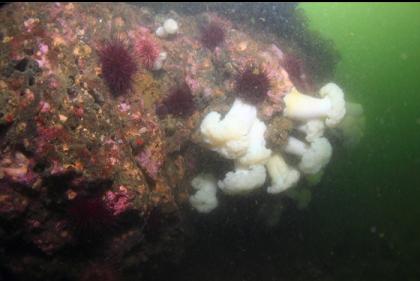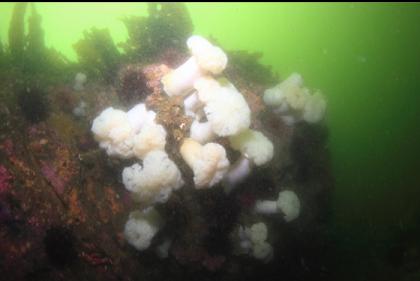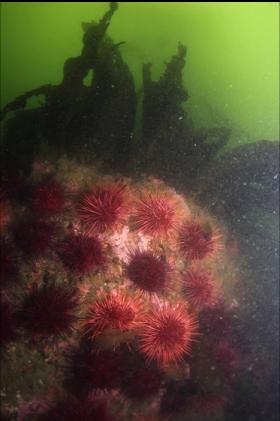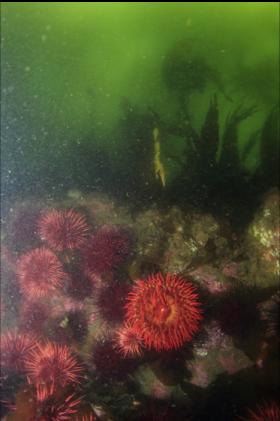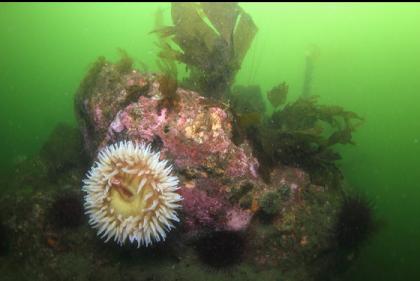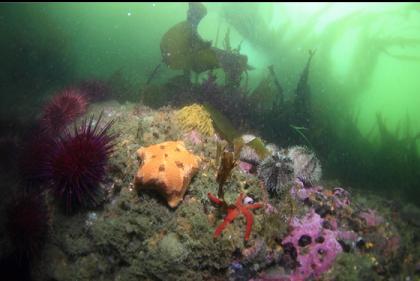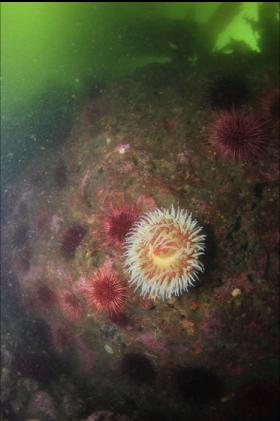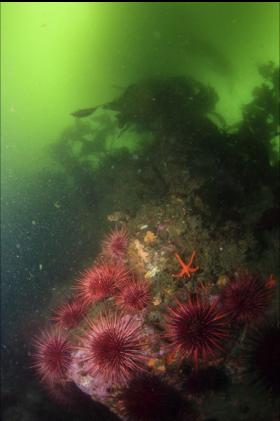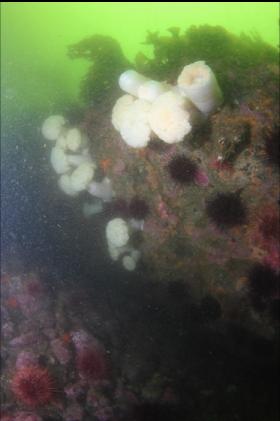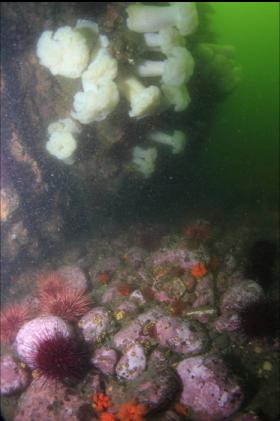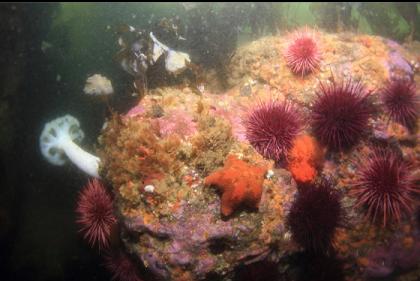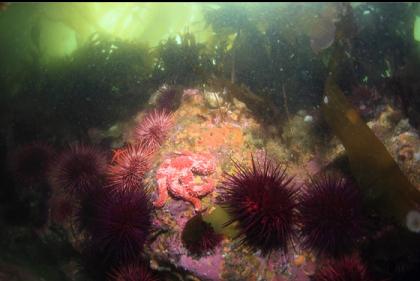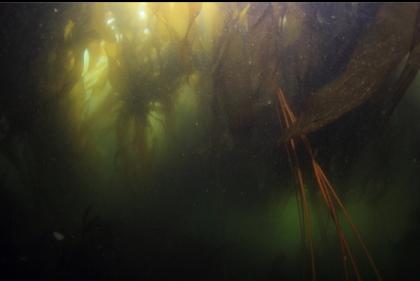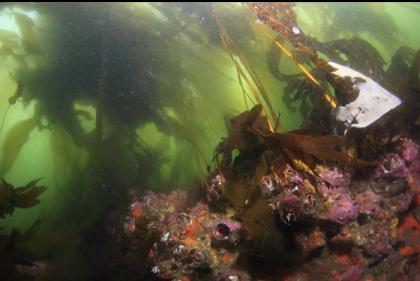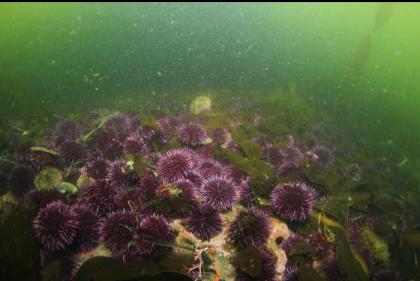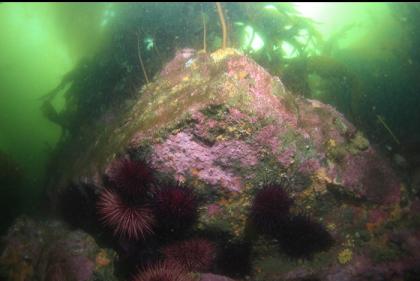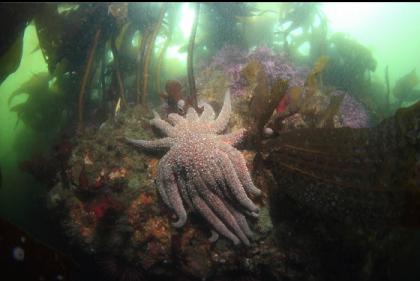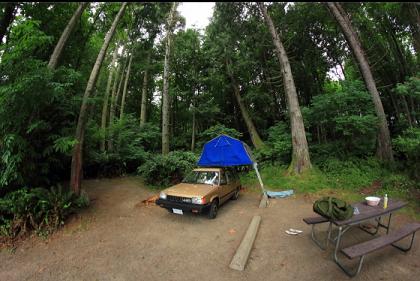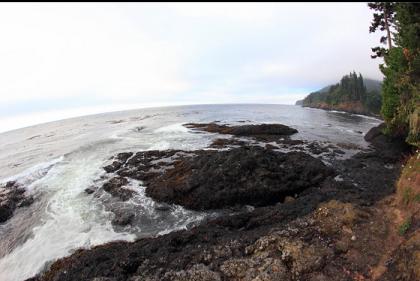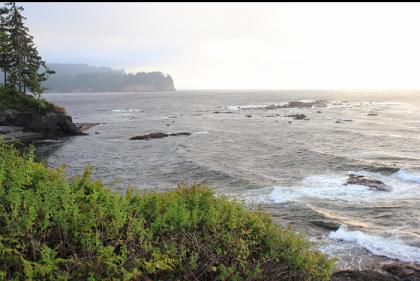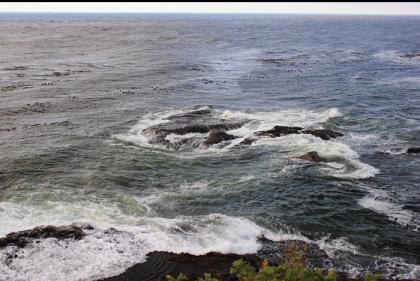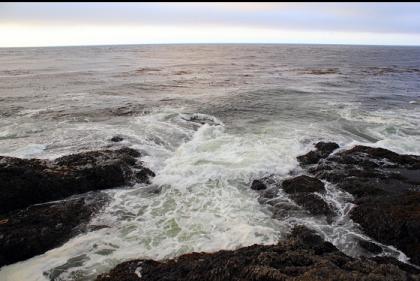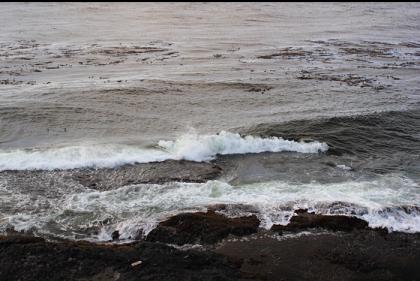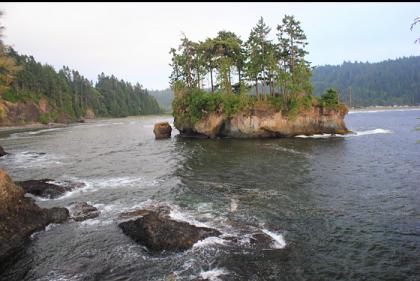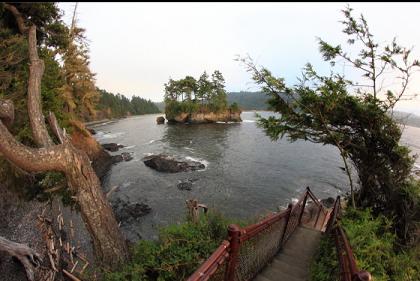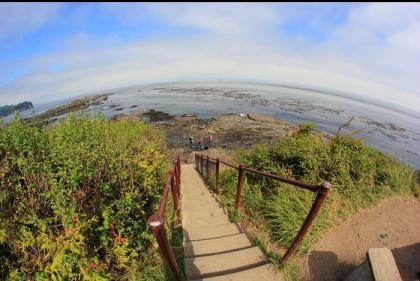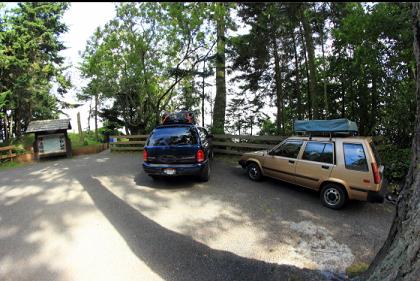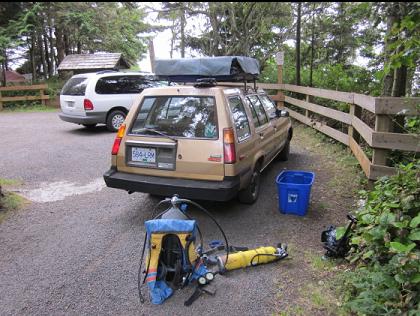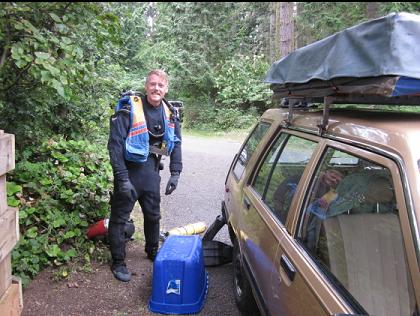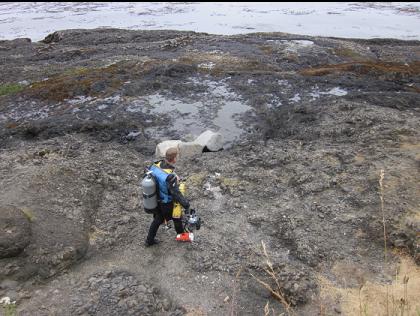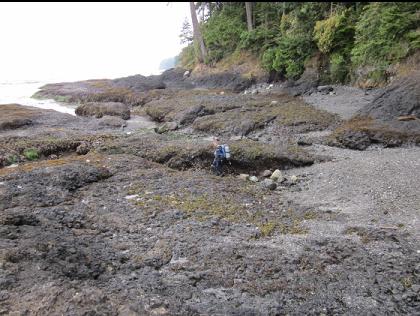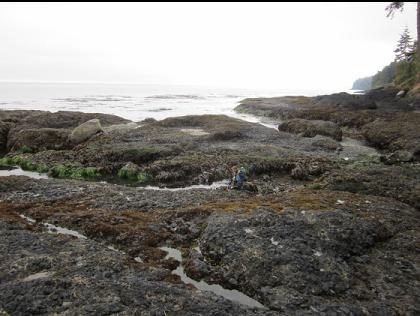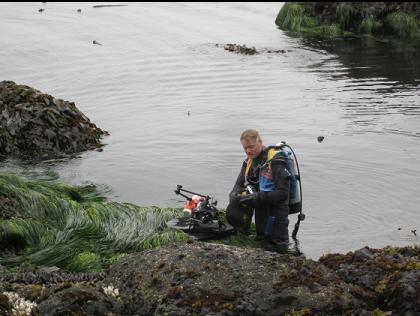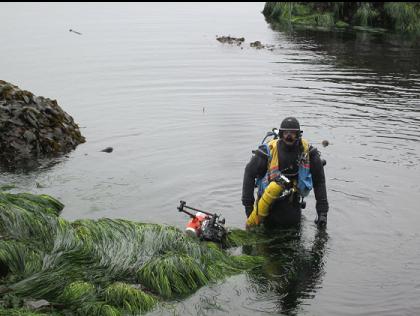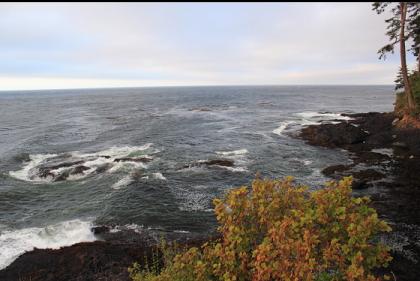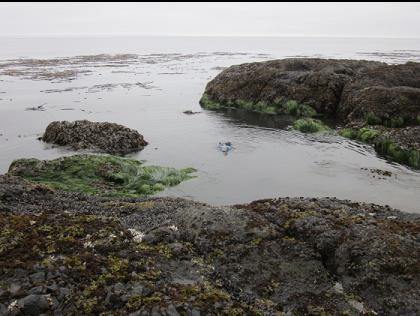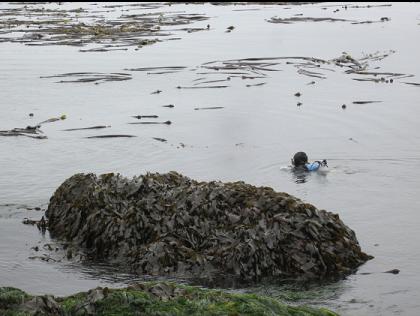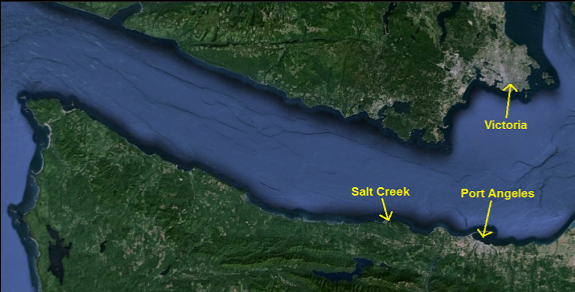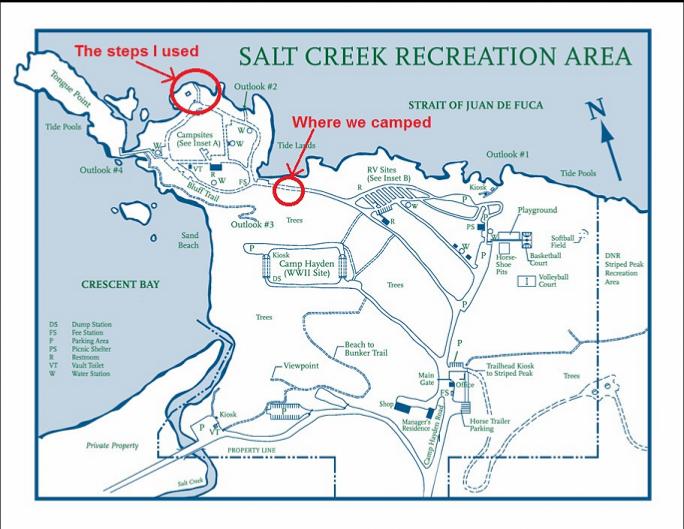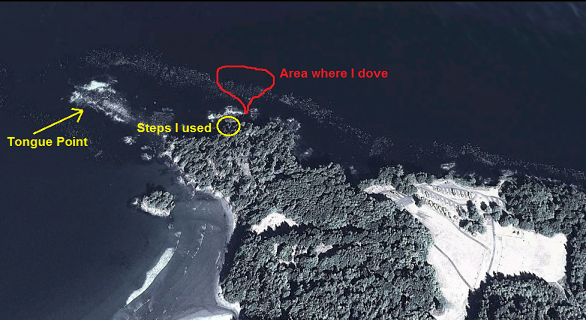Salt Creek Recreation Area is a park and campground on the U.S. Olympic Peninsula side of the Strait of Juan de Fuca. It's a bit West of the town of Port Angeles and more-or-less across the Strait from Sooke. Many divers regard it as the best shore diving in Washington State. I took the Coho ferry across from Victoria and drove to Salt Creek on July 20, 2013. I had heard that it can be difficult to dive here in the afternoon due to swell and surge. Sure enough, when I arrived in the afternoon, the swell was too big to safely get in the water. The coastline is a flat shelf of rock, exposed at low tide, that sticks out from the base of the cliffs. There are 4 sets of stairs that lead down to the water from the camping area. The stairs that are farthest to the West lead to Tongue Point, a flat rocky reef that sticks out from shore and is covered at high tide. The well-known wreck of the Diamond Knot is about 1/2-kilometer off this point. We stayed in the campground for the night and I could hear the surf crashing on the shore all night. It finally went quiet at about 6 in the morning and I looked out to flat-calm water. It was a very low tide (-2 feet) and the rock shelf along the coast was exposed and covered with slippery seaweed and surfgrass. I could also see an obvious flow of current ripping out past the kelp. Judging by the torn-away kelp and driftwood floating past, I'd say the current was flowing at close to 5 knots. I had a hard time believing that the current could get this fast in this part of the Strait, but it was an unusually-large tide exchange day. A couple of kayakers were having a hard time paddling against it. I waited a few hours and drove to a day-use parking area near some steps to save myself the hike from the campsite. The current had stopped and I went down the steps and to the right where there was a "chute" or canyon through the reef that made it easier to walk to the water. I swam out on the surface to where the bull kelp started. Visibility near shore was terrible. I couldn't see my fins so I'd say it was less than 6 feet. Out near the kelp, it improved slightly to about 6 feet. Out past the kelp, the rock bottom dropped down to about 20 feet deep (again, it was a very low tide). There were piles of urchins (large red/purple, small blue and small green), orange burrowing cucumbers and fish-eating anemones. The rocks were mostly covered with pink coraline algae. I also saw a few gumboot chitons, abalone, giant barnacles, cup corals, staghorn bryozoans and various seastars. I didn't notice many of those small things that I'm used to seeing (hermit crabs, shrimp, sculpins, etc.). I saw a few tiny nudibranchs that looked like baby clown nudibranchs. I also didn't see many fish. I saw 2 small lingcod and some kelp greenlings. I followed the bottom out from the base of the reefs. My maximum depth was 35 feet. There were some small reefs and boulders with more fish-eating anemones, urchins and some white plumose anemones. I could have kept swimming out to see what it was like deeper, but with the bad visibility (out here it had "improved" to about 8 feet) and the threat of current, I didn't want to swim too far. I later heard that if you use the steps East of the RV area, you can get a bit deeper nearer to shore. Even with the bad visibility, I could see why Washington divers like this place. It's colourful, there's a large area to explore and it has a wild, almost open-ocean feeling that must be very different from the more sheltered Puget Sound dives.


